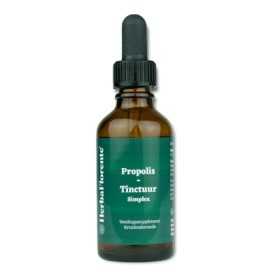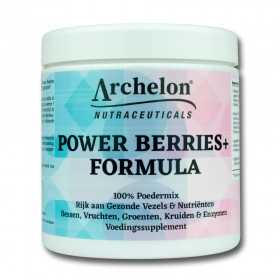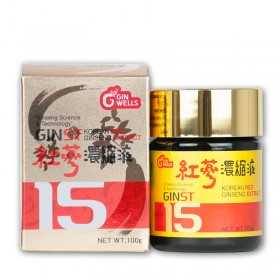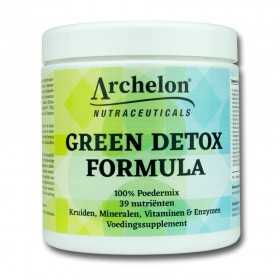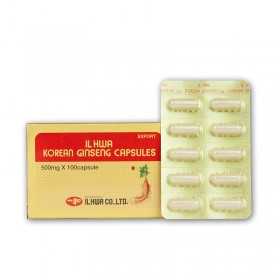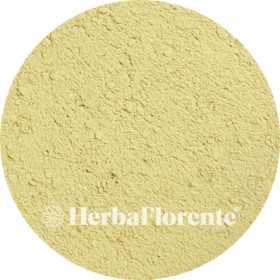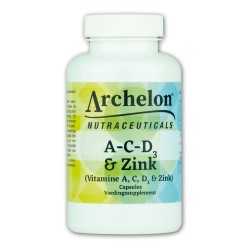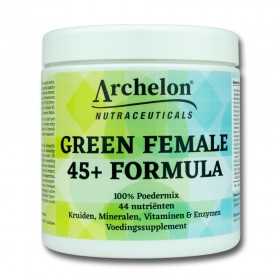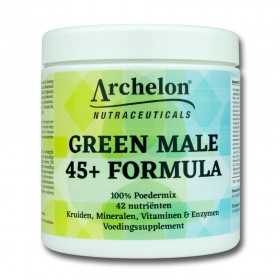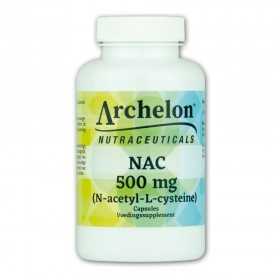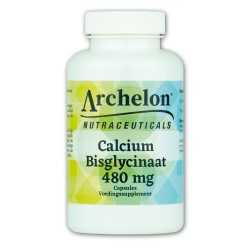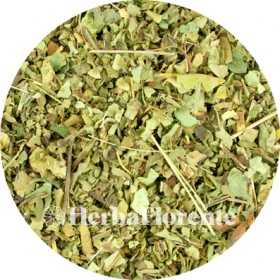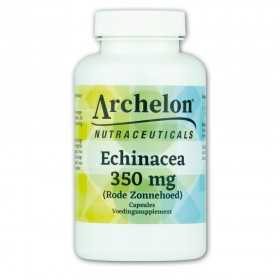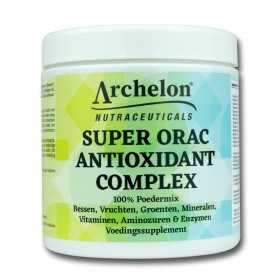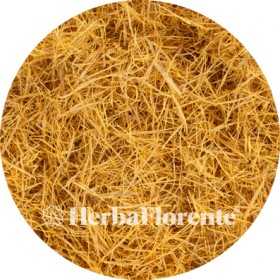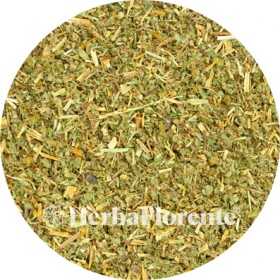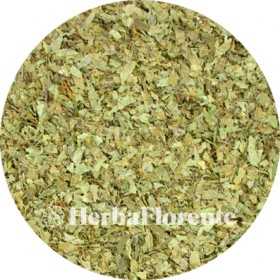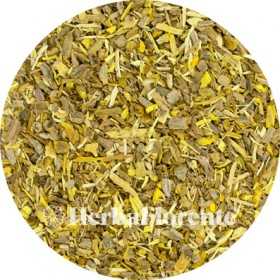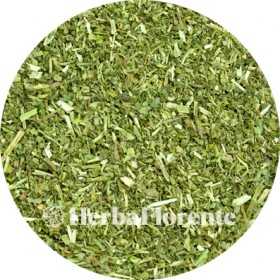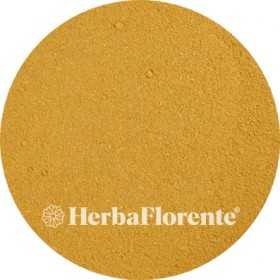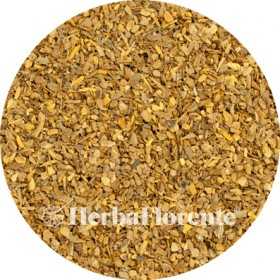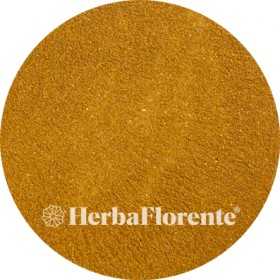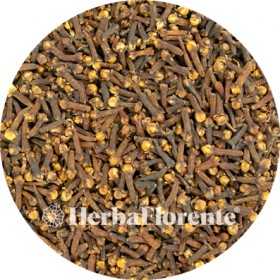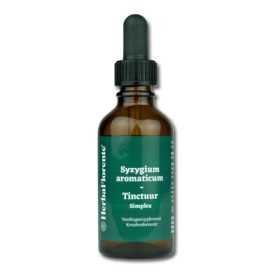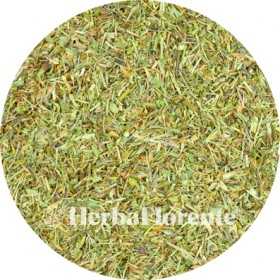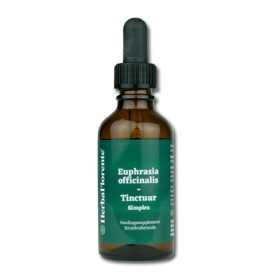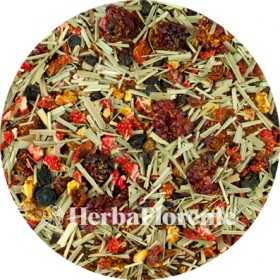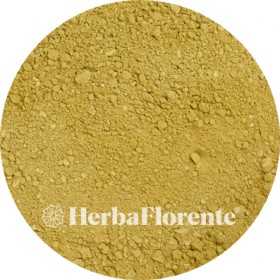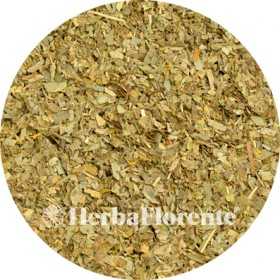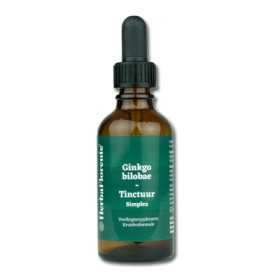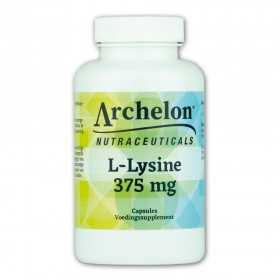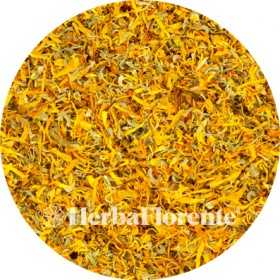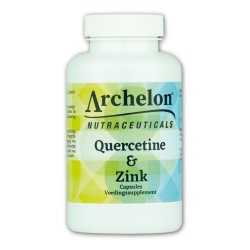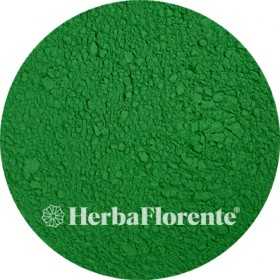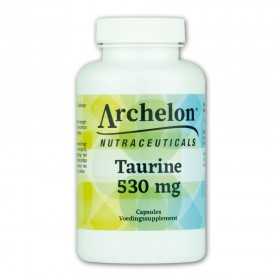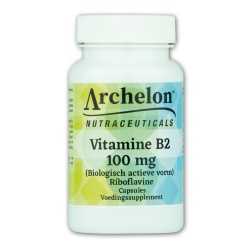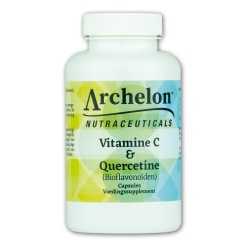Eyes
There are 27 products.
A-C-D3 & Zinc
Vitamin A plays a crucial role in various biochemical and physiological processes in cells. It binds to retinoid receptors, which activate or deactivate genes involved in cell specialization.
Ascorbic acid is the pure form of vitamin C. People generally tolerate buffered forms of ascorbic acid better due to the lack of gastrointestinal complaints. Vitamin C is essential for the body.
Although our skin can produce vitamin D, this is often insufficient. Vitamin D supplementation is therefore often necessary, because this vitamin plays a role in various body processes.
Zinc is available in various forms, with zinc bisglycinate having excellent bioavailability.
Ascorbic acid is the pure form of vitamin C. People generally tolerate buffered forms of ascorbic acid better due to the lack of gastrointestinal complaints. Vitamin C is essential for the body.
Although our skin can produce vitamin D, this is often insufficient. Vitamin D supplementation is therefore often necessary, because this vitamin plays a role in various body processes.
Zinc is available in various forms, with zinc bisglycinate having excellent bioavailability.
€35.95
Agremonie (Common) (Church Steeples) - Agrimonia eupatoria
The common agrimony (Agrimonia eupatoria) is a herbaceous plant belonging to the rose family (Rosaceae). This plant, with its bright yellow flowers in long, slender spikes, is quite common on calcareous roadsides and dikes in Belgium and the Netherlands.
In herbal medicine, this plant is used for various purposes due to its active constituents, including triterpenes, tanning and bitter substances, flavonoids, silicic acid and mucilages.
The most common use is as a tea, but the herb can also be made into a tincture.
In herbal medicine, this plant is used for various purposes due to its active constituents, including triterpenes, tanning and bitter substances, flavonoids, silicic acid and mucilages.
The most common use is as a tea, but the herb can also be made into a tincture.
€2.00
From: €2.00
Asian Pennywort (Gotu kola) - Hydrocotyles Folium (Centella asiatica)
Asian pennywort also known as Gotu kola(Centella asiatica), is a plant that thrives in Southeast Asia and plays a central role in Ayurvedic medicine. Due to its diverse active substances, Asian pennywort is widely used in herbal medicine. It is known for supporting cognitive functions such as memory, concentration and learning, and it is also used to promote healthy blood circulation and vascular function.
Asian pennywort is a delicate plant with creeping stems and small, rounded leaves, often accompanied by white or pink flowers. The main bioactive compounds in Asian pennywort are triterpene glycosides, alkaloids and essential oils.
Asian pennywort is a delicate plant with creeping stems and small, rounded leaves, often accompanied by white or pink flowers. The main bioactive compounds in Asian pennywort are triterpene glycosides, alkaloids and essential oils.
€3.50
From: €3.50
Barberry - Berberidi vulgaris
The barberry (Berberis vulgaris) is a shrub belonging to the barberry family (Berberidaceae) and native to Eurasia.
The entire plant, including the fruits and seeds, contains berberine.
The shrub grows on fairly dry, usually calcareous soil along thickets and forest edges.
Traditionally, the vitamin C-rich berries were used in Europe for making jam. In countries such as Iran, the fruits are used as a seasoning in rice dishes, fish and meat.
The entire plant, including the fruits and seeds, contains berberine.
The shrub grows on fairly dry, usually calcareous soil along thickets and forest edges.
Traditionally, the vitamin C-rich berries were used in Europe for making jam. In countries such as Iran, the fruits are used as a seasoning in rice dishes, fish and meat.
€2.00
From: €2.00
Catnip - Nepetae catariae
Wild catnip (Nepeta cataria) belongs to a genus of 250 species in the family Lamiaceae. The genus is closely related to Glechoma, Stachys and Prunella. This genus originally occurs in Europe and Asia. The stems grow in nodes and often form dense carpets on the ground. The leaves are coarsely toothed and feel soft because of the hairs. The erect stems bear small, tubular flowers in pairs that are located in the axils of the leaves.
€2.20
From: €2.20
Cinnamon - Cinnamomi ceylon
Cinnamon (Cinnamomum) has been known for centuries for its many uses. It is extracted from the bark of the Cinnamomum cassia tree, where part of the bark is carefully cut loose and the rough outer surface is removed with a knife. The well-known cinnamon sticks or cinnamon powder are made from the inside of the bark. Cinnamon has been valued for centuries, both in culinary and herbalist circles.
This herb has been used in Asian cultures for centuries for its versatile uses. The wonderful aroma of cinnamon is determined by volatile oils, of which cinnamaldehyde is the most common. In addition, cinnamon also contains substances such as eugenol, coumarins, tannins, OPCs and terpenes.
This herb has been used in Asian cultures for centuries for its versatile uses. The wonderful aroma of cinnamon is determined by volatile oils, of which cinnamaldehyde is the most common. In addition, cinnamon also contains substances such as eugenol, coumarins, tannins, OPCs and terpenes.
€2.95
From: €2.95
Cinnamon - Cinnamomi ceylon - Cut
Cinnamon (Cinnamomum) has been known for centuries for its many uses. It is extracted from the bark of the Cinnamomum verum tree, where part of the bark is carefully cut loose and the rough outer surface is removed with a knife. The well-known cinnamon sticks or cinnamon powder are made from the inside of the bark. Cinnamon has been valued for centuries, both in culinary and herbalist circles.
This herb has been used in Asian cultures for centuries for its versatile uses. The wonderful aroma of cinnamon is determined by volatile oils, of which cinnamaldehyde is the most common. In addition, cinnamon also contains substances such as eugenol, coumarins, tannins, OPCs and terpenes.
This herb has been used in Asian cultures for centuries for its versatile uses. The wonderful aroma of cinnamon is determined by volatile oils, of which cinnamaldehyde is the most common. In addition, cinnamon also contains substances such as eugenol, coumarins, tannins, OPCs and terpenes.
€3.00
From: €3.00
Clove - Syzygium aromaticum
Clove (Syzygium aromaticum) is the dried, fragrant flower bud of the clove tree. The main active ingredient is eugenol, which also promotes the antioxidant properties of cloves. Clove is known for its antioxidant effect and supports healthy digestion. In addition, it improves blood circulation and soothes the throat.
€3.10
From: €3.10
Clove - Syzygium aromaticum - Whole
Clove (Syzygium aromaticum) is the dried, fragrant flower bud of the clove tree. The main active ingredient is eugenol, which also promotes the antioxidant properties of cloves. Clove is known for its antioxidant effect and supports healthy digestion. In addition, it improves blood circulation and soothes the throat.
€3.00
From: €3.00
Clove Tincture - Syzygium aromaticum Tincture
Single herbal tincture made with dried flower of Syzygium aromaticum (Clove).
Clove (Syzygium aromaticum) is the dried, fragrant flower bud of the clove tree. The main active ingredient is eugenol, which also promotes the antioxidant properties of cloves. Clove is known for its antioxidant effect and supports healthy digestion. In addition, it improves blood circulation and soothes the throat.
Clove (Syzygium aromaticum) is the dried, fragrant flower bud of the clove tree. The main active ingredient is eugenol, which also promotes the antioxidant properties of cloves. Clove is known for its antioxidant effect and supports healthy digestion. In addition, it improves blood circulation and soothes the throat.
€10.95
Eyebright - Euphrasia officinalis
The Eyebright (Euphrasia officinalis) belongs to the broomrape family (Orobanchaceae) and mainly thrives in France, with the exception of the Mediterranean region. This plant can also be found in other parts of Europe, such as Germany, Austria and Scotland.
Traditionally, Eyebright was used to treat eye infections, but also for headaches and stomach complaints.
The Eyebright is an annual plant that usually grows between 10 and 25 cm high and is covered with numerous long glandular hairs. From May to September the plant blooms with white flowers that often have a light purple upper lip and a yellow spot on the lower lip.
Traditionally, Eyebright was used to treat eye infections, but also for headaches and stomach complaints.
The Eyebright is an annual plant that usually grows between 10 and 25 cm high and is covered with numerous long glandular hairs. From May to September the plant blooms with white flowers that often have a light purple upper lip and a yellow spot on the lower lip.
€5.00
From: €5.00
Eyebright Tincture - Euphrasia officinalis Tincture
Single herbal tincture made with dried herb of Euphrasia officinalis (Eyebright).
The Eyebright (Euphrasia officinalis) belongs to the broomrape family (Orobanchaceae) and mainly thrives in France, with the exception of the Mediterranean region. This plant can also be found in other parts of Europe, such as Germany, Austria and Scotland.
Traditionally, Eyebright was used to treat eye infections, but also for headaches and stomach complaints.
The Eyebright is an annual plant that usually grows between 10 and 25 cm high and is covered with numerous long glandular hairs. From May to September the plant blooms with white flowers that often have a light purple upper lip and a yellow spot on the lower lip.
The Eyebright (Euphrasia officinalis) belongs to the broomrape family (Orobanchaceae) and mainly thrives in France, with the exception of the Mediterranean region. This plant can also be found in other parts of Europe, such as Germany, Austria and Scotland.
Traditionally, Eyebright was used to treat eye infections, but also for headaches and stomach complaints.
The Eyebright is an annual plant that usually grows between 10 and 25 cm high and is covered with numerous long glandular hairs. From May to September the plant blooms with white flowers that often have a light purple upper lip and a yellow spot on the lower lip.
€10.95
Fruits Herbal Tea
Herbal tea composed of various herbs
Delicious for every moment
Delicious for every moment
€3.95
Ginkgo (Maidenhair tree) - Ginkgo bilobae
Maidenhair tree (Ginkgo biloba), also known as the Japanese Temple Tree, has been used in traditional Chinese herbal medicine for centuries. Ginkgo biloba is used to improve blood circulation, promote concentration and support memory. The main components of ginkgo biloba are (bio)flavonoids (flavonglycosides), bilobalides and ginkgolides (terpene lactones).
It is a unique deciduous tree that is considered a species with no direct family ties. Charles Darwin called the ginkgo biloba a 'living fossil' because it has been around for about two hundred and fifty million years. Ginkgo originally comes from China.
It is a unique deciduous tree that is considered a species with no direct family ties. Charles Darwin called the ginkgo biloba a 'living fossil' because it has been around for about two hundred and fifty million years. Ginkgo originally comes from China.
€3.20
From: €3.20
Ginkgo (Maidenhair tree) - Ginkgo bilobae - Cut
Maidenhair tree (Ginkgo biloba), also known as the Japanese Temple Tree, has been used in traditional Chinese herbal medicine for centuries. Ginkgo biloba is used to improve blood circulation, promote concentration and support memory. The main components of ginkgo biloba are (bio)flavonoids (flavonglycosides), bilobalides and ginkgolides (terpene lactones).
It is a unique deciduous tree that is considered a species with no direct family ties. Charles Darwin called the ginkgo biloba a 'living fossil' because it has been around for about two hundred and fifty million years. Ginkgo originally comes from China.
It is a unique deciduous tree that is considered a species with no direct family ties. Charles Darwin called the ginkgo biloba a 'living fossil' because it has been around for about two hundred and fifty million years. Ginkgo originally comes from China.
€3.00
From: €3.00
Ginko (Maidenhair tree) Tincture - Ginkgo bilobae Tincture
Single herbal tincture made with dried leaves of Ginkgo bilobae (Ginko - Maidenhair tree).
Maidenhair tree (Ginkgo biloba), also known as the Japanese Temple Tree, has been used in traditional Chinese herbal medicine for centuries. Ginkgo biloba is used to improve blood circulation, promote concentration and support memory. The main components of ginkgo biloba are (bio)flavonoids (flavonglycosides), bilobalides and ginkgolides (terpene lactones).
It is a unique deciduous tree that is considered a species with no direct family ties. Charles Darwin called the ginkgo biloba a 'living fossil' because it has been around for about two hundred and fifty million years. Ginkgo originally comes from China.
Maidenhair tree (Ginkgo biloba), also known as the Japanese Temple Tree, has been used in traditional Chinese herbal medicine for centuries. Ginkgo biloba is used to improve blood circulation, promote concentration and support memory. The main components of ginkgo biloba are (bio)flavonoids (flavonglycosides), bilobalides and ginkgolides (terpene lactones).
It is a unique deciduous tree that is considered a species with no direct family ties. Charles Darwin called the ginkgo biloba a 'living fossil' because it has been around for about two hundred and fifty million years. Ginkgo originally comes from China.
€10.95
L-Lysine - 375 mg
Lysine is an essential amino acid, meaning the body cannot produce it itself and must therefore obtain it from food or supplements. Lysine is found in meat, vegetables and fruit, among other things. It plays a role in various biochemical processes in the body. For example, L-lysine helps with the absorption of calcium and is a building block for the production of proteins.
€17.95
Marygold (Calendula) - Calendulae officinalis
The marigold (Calendula officinalis) is a member of the composite family (Compositae or Asteraceae) and is often grown in ornamental gardens. This plant originally comes from Southern Europe.
It is an annual plant that usually bears orange, but sometimes yellow flowers. The marigold usually grows to a height of 30-45 cm and has blunt leaves. Its flowering period extends from May to November, while the fruits are often curved and boat-shaped.
Both fresh and dried flowers can be used in soups, and they also act as a natural coloring for cheese, butter and other foods. Historically, the petals were even used to imitate saffron.
It is an annual plant that usually bears orange, but sometimes yellow flowers. The marigold usually grows to a height of 30-45 cm and has blunt leaves. Its flowering period extends from May to November, while the fruits are often curved and boat-shaped.
Both fresh and dried flowers can be used in soups, and they also act as a natural coloring for cheese, butter and other foods. Historically, the petals were even used to imitate saffron.
€2.40
From: €2.40
Quercetin & Zinc
Quercetin is a flavonoid, also called bioflavonoid. This natural plant compound is found in various plants, fruits and vegetables. Flavonoids are responsible for the vibrant colors (pigments) in these plants and come in various shades. They play a crucial role in plant metabolism, regulate growth, and provide protection against UV light, oxidation and heat.
Zinc is available in different forms. Zinc bisglycinate has a very good bioavailability. It is a chelated form of zinc bound to two (bis) molecules of the amino acid glycine which has more benefits for the body. Zinc has a very wide range of action and is involved in many body processes. Zinc is essential for the activity of more than 300 enzymes that have the zinc ion as a cofactor.
Zinc is available in different forms. Zinc bisglycinate has a very good bioavailability. It is a chelated form of zinc bound to two (bis) molecules of the amino acid glycine which has more benefits for the body. Zinc has a very wide range of action and is involved in many body processes. Zinc is essential for the activity of more than 300 enzymes that have the zinc ion as a cofactor.
€34.95
Spirulina - Spirulina platensis
Spirulina, a type of algae, provides support to the immune system through its rich nutrients and relieves fatigue.
The blue-green spirulina is a type of algae that contains both chlorophyll (green pigment) and phycocyanin (blue pigment). These single-celled algae form spiral microscopic strands and thrive in warm, fresh water.
With its abundance of essential nutrients, spirulina is invaluable to our body. It contains more than 60% complete protein, almost three times more than beef, and is rich in vitamin B complex, vitamin E, carotenoids, iron, manganese, zinc and essential fatty acids such as gamma-linolenic acid. With ten different mixed carotenoids, spirulina is the most beta-carotene-rich food known.
The blue-green spirulina is a type of algae that contains both chlorophyll (green pigment) and phycocyanin (blue pigment). These single-celled algae form spiral microscopic strands and thrive in warm, fresh water.
With its abundance of essential nutrients, spirulina is invaluable to our body. It contains more than 60% complete protein, almost three times more than beef, and is rich in vitamin B complex, vitamin E, carotenoids, iron, manganese, zinc and essential fatty acids such as gamma-linolenic acid. With ten different mixed carotenoids, spirulina is the most beta-carotene-rich food known.
€2.50
From: €2.50
Super ORAC Antioxidant Complex
Super ORAC Antioxidant Complex is designed to fight free radicals and reduce oxidative stress. Rich in polyphenols and with a high ORAC value, our formula is designed to provide you with powerful antioxidants that help your body neutralize harmful free radicals.
Balanced mix of nutrients to support the cells to give them the best possible support in the fight against oxidative damage.
Balanced mix of nutrients to support the cells to give them the best possible support in the fight against oxidative damage.
€79.50
Taurine - 530 mg
Taurine, an amino acid also known as aminosulfonic acid due to its sulfur content, plays a crucial role in providing energy and oxygen to the body. In addition to these functions, taurine also has other important properties. It is produced by all mammals and is one of the most abundant amino acids, found in various tissues. Dietary sources of taurine are primarily protein-rich, animal foods such as meat, fish, shellfish, poultry and eggs.
Although the body is able to produce taurine itself from the amino acids methionine and cysteine, these sources are often suboptimal. That is why taurine supplementation can offer a good solution. Taurine works closely with zinc and therefore has a synergistic effect with this mineral. It is therefore very important to get enough zinc.
Although the body is able to produce taurine itself from the amino acids methionine and cysteine, these sources are often suboptimal. That is why taurine supplementation can offer a good solution. Taurine works closely with zinc and therefore has a synergistic effect with this mineral. It is therefore very important to get enough zinc.
€16.95
Vitamin B2 (Riboflavin) (Biologically Active Form) - 100 mg
Vitamin B2 (Riboflavin) plays a role as a coenzyme in energy metabolism and supports energy production by acting as a biochemical electron carrier in many oxidation and reduction reactions involved. It also helps protect fats, proteins and DNA from oxidation, as the production of glutathione and the antioxidant enzyme gluthathione peroxidase depend on this vitamin. In addition, vitamin B2 can help to reduce fatigue, it helps to maintain normal red blood cells, it is good for the skin, eyes, mucous membranes and the nervous system.
€24.95
Vitamin C & Quercetin (Bioflavonoids)
The pure form of vitamin C is ascorbic acid. The buffered forms of ascorbic acid are generally better tolerated by humans than the pure form. Ascorbic acid is acidic and the buffered forms give virtually no gastrointestinal problems. Vitamin C is an essential vitamin for the body. It is involved in many processes in the body, including immune system, blood vessels, bones, cartilage, gums, teeth, skin, energy metabolism, nervous system and fatigue.
Quercetin is a flavonoid, also called bioflavonoid. This natural plant compound is found in various plants, fruits and vegetables. Flavonoids are responsible for the vibrant colors (pigments) in these plants and come in various shades. They play a crucial role in plant metabolism, regulate growth, provide protection against UV light, oxidation.
Quercetin is a flavonoid, also called bioflavonoid. This natural plant compound is found in various plants, fruits and vegetables. Flavonoids are responsible for the vibrant colors (pigments) in these plants and come in various shades. They play a crucial role in plant metabolism, regulate growth, provide protection against UV light, oxidation.
€29.95

